Posts Tagged: cuckoo bee
Ever Seen a Cuckoo Bee?
Ever seen a cuckoo bee? They're also called parasitic bees or "kleptoparasites" or "cleptoparasitises." They cannot carry pollen (no apparatus) and do not construct their nests. They lay their eggs in the nests of their hosts and then eat the food...
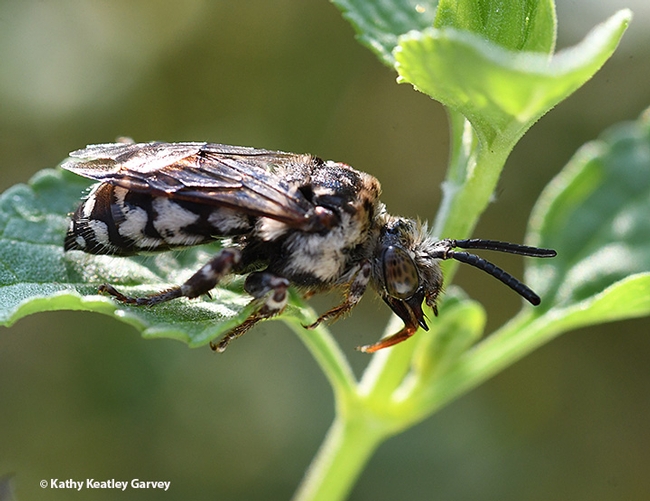
A cuckoo bee, Xeromelecta californica, rests on a leaf in a Vacaville pollinator garden. (Photo by Kathy Keatley Garvey)
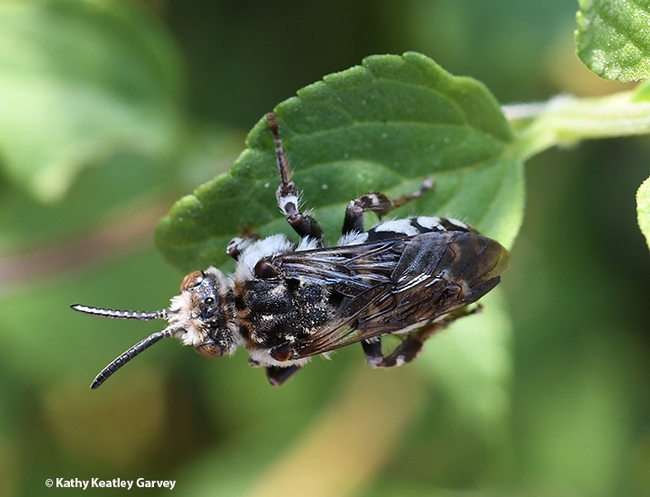
Dorsal view of the cuckoo bee, Xeromelecta californica, in a Vacaville pollinator garden. It flew just after this image was made. (Photo by Kathy Keatley Garvey)
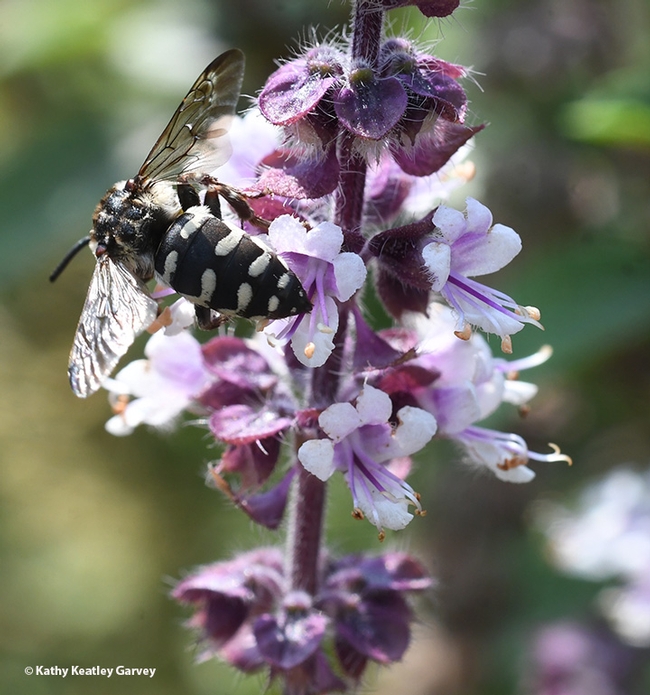
The cuckoo bee, Xeromelecta californica, sipping some nectar. (Photo by Kathy Keatley Garvey)
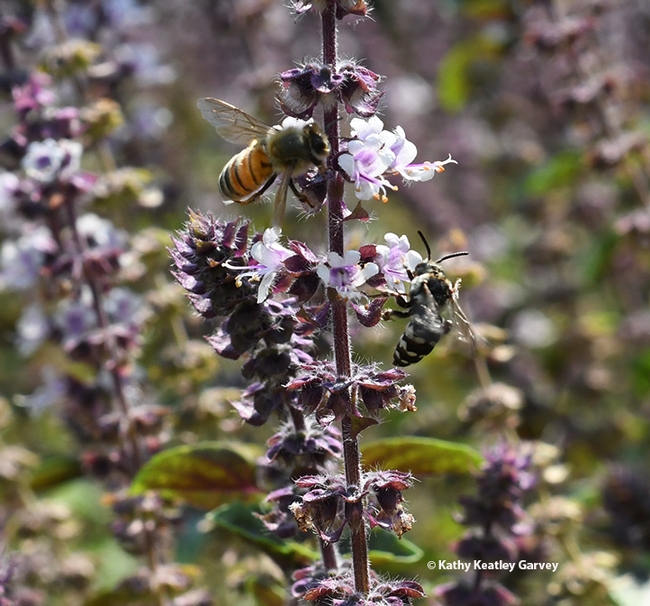
A honey bee, Apis mellifera, and a cuckoo bee, Xeromelecta californica, sharing African blue basil blossoms. (Photo by Kathy Keatley Garvey)
The Sneaky Cuckoo Bee
You could call it a slacker, a deadbeat, a moocher, a sponger, or a loafer. Or you could call it a cuckoo bee. Take the cuckoo bee, Xeromelecta californica, a parasite of the digger bee, Anthophora. When the female Anthophora leaves its nest to...
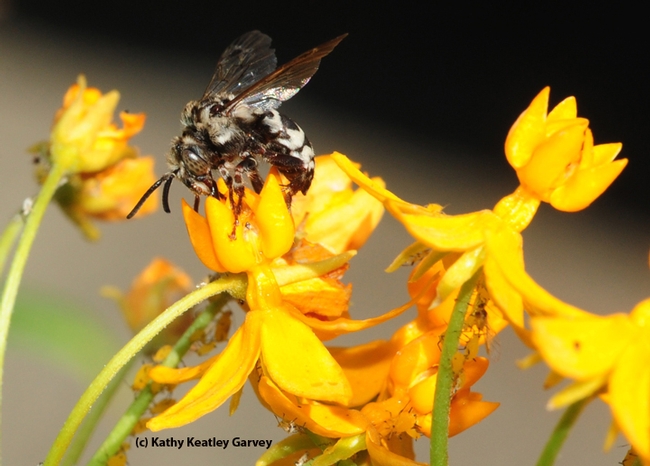
A cuckoo bee, Xeromelecta californica, sips nectar from a tropical milkweed, Asclepias curassavica, in Vacaville, Calif. (Photo by Kathy Keatley Garvey)
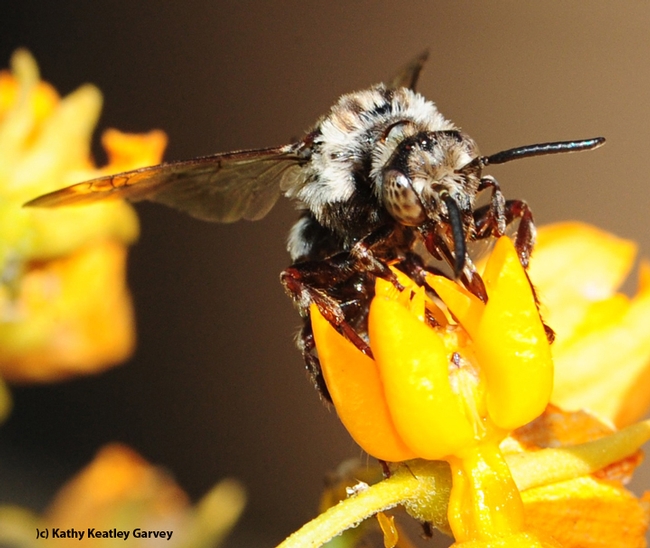
Close-up of a cuckoo bee, Xeromelecta californica, on a tropical milkweed, Asclepias curassavica. (Photo by Kathy Keatley Garvey)
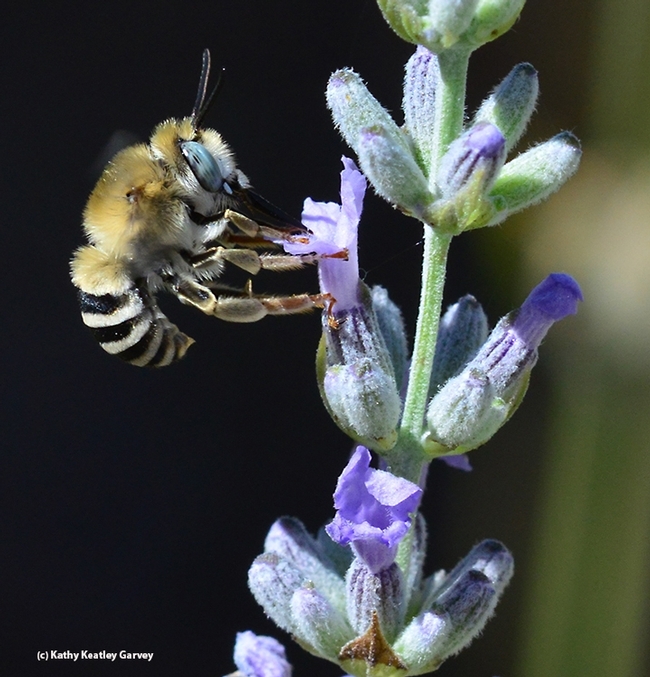
A digger bee, Anthophora urbana, sips nectar from lavender. The cuckoo bee, Xeromelecta californica, is a parasite of Anthophora. It lays eggs in the host's nest, resulting in death of the host's offspring. (Photo by Kathy Keatley Garvey)
Why This Is Bee Is Cuckoo
When you visit the half-acre Häagen-Dazs Honey Bee Haven, a bee friendly garden on Bee Biology Road at the University of California, Davis, you might just see a cuckoo bee. The cuckoo bee (see below) is a male Triepeolus concavus, as...

A male cuckoo bee, Triepeolus concavus, on a blanket flower (Gaillardia). (Photo by Kathy Keatley Garvey)

Male cuckoo bee sipping nectar. (Photo by Kathy Keatley Garvey)
Seeing Red
It’s triple-digit hot and you’re relaxing in a swimming pool when suddenly you realize you have company. A knat-sized insect with a red abdomen lands next to you. It looks like a wasp. No, it looks like a bee. Wait, what is it? In this case (see...

Sweat bee
Looking for Cheap Urban Real Estate
Chances are if you walked up to a group of people and asked "Have you seen a Megachile today?" they'd stare at you blankly. What's a Megachile? It's a native bee, also known as a leafcutter bee. When most people think about bees, they...
Jaime Pawelek
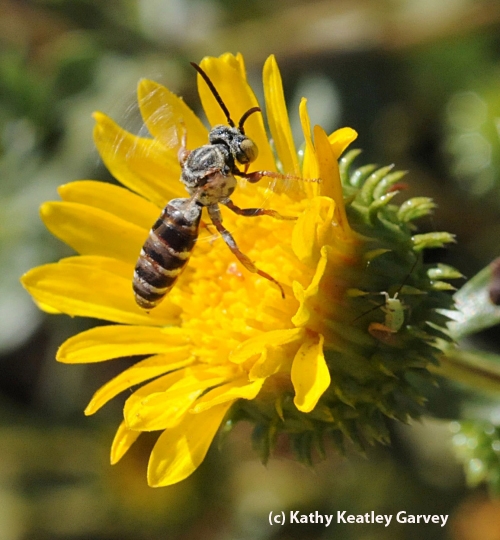
Cuckoo bee

